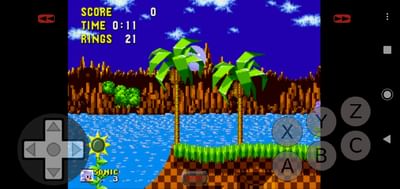


Nothing is more frustrating for players than to have their character killed by an object when the object isn’t touching the artwork the player sees. Define Your BoundariesĪ common mistake newbies make when creating their first games is not paying enough attention to the differences between their artwork and the collision shapes below it. This will delete objects once they’ve moved a specified number of pixels outside of the camera’s view. Use the Object Deletion Threshold options found in the Mind Map. In Buildbox Classic, you can have your game automatically delete unneeded objects once they’re no longer needed in the game. Don’t Hog Your Player’s Memoryĭevice memory always needs to be a consideration when you’re developing mobile games. In Buildbox Classic, you can do this by selecting “Atlases” from the Tools menu and then clicking “Optimize.” If you’ve made a lot of changes to your artwork, select “Rebuild” to optimize the organization of the atlas. If you decide to swap out images while you’re in the midst of design, don’t forget to delete the files from the game. To add your sprite’s artwork to your game in Buildbox Classic, just put it in a file on your computer, select your character and drag your artwork into the Default Animation pane. Are there times when your character is likely to look up, or backward? Use images that reflect the character’s actions and intent. If your character jumps, for example, use different poses for when it’s about to jump, while it’s in the air and when it lands. Variety isn’t just the spice of life it’s often the difference between a dull game and one that fascinates your players. Use a Variety of Imagesīecause the camera angle doesn’t change, it may be tempting to skimp on your artwork by using just one or two images for your character or reusing the same image for different obstacles – don’t. For a platformer game, for example, you have a choice between Platformer, with lots of obstacles already built-in to be customized, or Impossible, which has an emphasis on speed to challenge players’ reflexes. This will save you countless hours in development so you can spend your time and energy on perfecting your game, rather than starting from scratch. Buildbox Classic comes with dozens of ready-to-go templates, so take some time to choose one that comes closest to what your finished game will be. Starting a game from scratch is always an option, but it’s not really necessary.
#Game maker retor palette swap how to#
How to Design a 2D Game in Buildbox ClassicĢD game development is easy with Buildbox Classic. This makes them more appealing to people with older devices or those who have limited storage on their devices, thus increasing the size of your potential customer base. Compared to a dynamic camera, there are less design choices involved and 2D artwork is almost always easier to create too.ĢD games usually require less memory, which is an important consideration for mobile devices. The result is that 2D games are usually easier to create, particularly if you’re new to game design. They function on only two axes: x-axis and y-axis, creating a world of their own.
#Game maker retor palette swap free#
3D games attempt to recreate a world in three dimensions on a flat screen, with a dynamic camera that is free to move wherever the character goes and objects that change their sizes and angles accordingly. 2D vs 3D Games: Key DifferencesĢD and 3D games differ in a couple of ways. For players, 2D games are as popular as they’ve ever been, and they offer several advantages for developers as well. If you’re ready to start developing your first video game, Buildbox Classic has everything you need to create a 2D game that will keep players coming back for more.


 0 kommentar(er)
0 kommentar(er)
